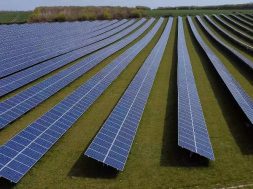
Photovoltaik-Institut Berlin develops EVA film analysis process
The choice of EVA film used in the production of solar modules significantly influences the end product’s lifespan and susceptibility to defects – and, ultimately, the yield of the entire PV power plant in which the modules are used. At the same time, price competition in the international solar market often leads to the use of substandard EVA film. Photovoltaik-Institut Berlin (PI Berlin) has developed the first polymer analysis process for inspecting the quality of EVA film. The institute will introduce the new EVA test to the public at Intersolar Europe in Munich.
“Over the past few years, we have encountered an increasing number of PV power plant faults associated with low-quality EVA film. Even producers of branded products are not immune against being supplied with mislabelled goods or film of widely varying quality, so that substandard film is not just found in non-branded products. Also, film suppliers themselves may receive substandard materials from their own contractors. Protecting yourself is not all that easy, actually,” explains Dr Juliane Berghold, head of module technology and research at PI Berlin.
EVA analysis inspects the chemistry behind the film
PI Berlin has joined forces with its Japanese partner, Mitsui Chemicals, to develop an EVA test method. The test begins by verifying whether the film includes all the chemical components required for a high-quality product, for example certain additives such as UV absorbers and antioxidants. The next step is an investigation to find out whether the film contains the correct concentration of each of these additives. Finally, the results are compiled in a test report.
Low-quality film reduces module lifetime
Second-rate film has the potential to cause a wide range of damage: For instance, poor film quality is frequently associated with potential induced degradation (PID), which may lower the performance and lifespan of solar modules and significantly reduce the yield of entire PV parks. Serious delamination in solar modules and all manner of corrosion damage – such as corroded solar cell metallisation and “snail trails”, which make tiny hairline cracks and cell fractures visible – are also frequently symptomatic of low film quality.
Protection for module manufacturers and plant operators
“We are receiving a growing number of enquiries from module manufacturers and plant operators looking to guard themselves against potential consequential damage from the outset. In these cases, we check whether the film used meets the criteria agreed with our clients’ suppliers in the bill of materials,” says Berghold. “The test is also instrumental in researching the cause of failure in PV power plants during error analysis. Sometimes, the investigation reveals a film to be a cheap replica, in which all the additives are present but their concentrations are far too low.”
PI Berlin is presenting its new test method and other analysis processes at the Intersolar Europe exhibition in Munich, Germany, from 22–24 June 2016.
















